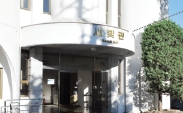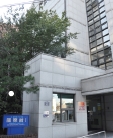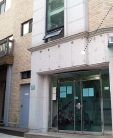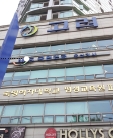On the way to SMU, you pass some mysterious buildings over and over. Some of you might notice them and start having question, but almost of you have little interests about them. These buildings are out of main campus (The 1st Campus & The Foundation Campus) and look like one of common buildings among a large number of cafes, shops and residential area in the whole district Chungpa-dong. However each of them has SMU’s logo on their entrance sign board, so it says that they belong to SMU undoubtedly. So, the Sookmyung Times (SMT) set to work figuring out what they are and what they are for.
Do you know that many school buildings are off campus?
If you see the campus map on the website, you can find that nine subsidiary buildings are off campus. Moreover, one building which is not marked on the campus map is near Nam-young station. What are these building used for? Some buildings are too far to use them, and some people who go to them for the first time have trouble locating them, like lost treasure. Are they valuable treasures to Sookmyungians?
What are These Buildings Used for?

Saebit Hall is used the most by the undergraduate students among the affiliated buildings. Especially the students from the department of dance or physical education go to Saebit Hall to take the practical classes. Also, some students use Saebit Hall to take physical training class like Yoga and Pilates. It takes about 10 minutes to run from the Myungshin Building, so it is hard for students to arrive at Seabit Hall in between classes.

They are the dormitories for global exchange students only. As the number of global exchange students increases, SMU has purchased some of the buildings around campus to make dormitories. Now, other exchange student dormitories are out off campus in addition to Baengno and Maehwa International House.

Guguk House
There are a dormitory, a library, and a reading room for ROTC students in the Guguk house. Also, some global exchange students live in the dormitory in the Guguk house.

Sookmyung Professional Center
The Graduate School of TESOL is in the Sookmyung Professional Center, so there are classrooms, professors’ offices, and an English library.

International house 4
The Graduate School of International Service and the Center for Global Human Resources Development are in International House 4.

Go-ryu Building 2nd floor (near the Nam-Yang Station)
Several research institutes, including the Sookmyung Institute of Multicultural studies, the Research Institute of Asian Women, and the Institute of Child Studies are in the Goryu building. This building is the farthest from the SMU campus.
Useful programs in these institutes
Center for global human resource development
However, Although SMU students would like to attend global programs like abroad studying and volunteer work, they do not know this center. The center’s programs which are useful for students are not promoted. Many students, who want to take global internship, usually go to Office of International Affairs. It is important to explain that the center provides programs which are different from Office of International Affairs’ programs.
The Research Institute of Asian Women
These affiliated research institutes are located in Go-ryu building near the Nam-yung Station. Go-ryu building looks like an officetel rather than a school building. The Research Institute of Asian Women tries to improve Korean and Asian women’s authority, so it researches Asian women’s problems in diverse areas, and develops programs for future woman leader. To achieve these purposes, it publishes books researching women’s role in the society, and holds seminars as the pivotal research institute of women. Researches about women will help SMU students to become leaders in society. The institute needs to explain how to attend a seminar. It conducts ‘LaLaLa program’ which is a tutoring for a neglected class of people who live in Yong-san. This program was posted on Sookmyung website, so many students can participate in the program. Although the institute is far from campus, Students are familiar with it by interacting on website.
Sookmyung Institute of Multicultural studies
Sookmyung Institute of Multicultural studies (SIMS)’s purpose is to create academic foundations of multicultural studies and to promote understanding of multicultural society as a whole. It holds annual SIMS conference and trains multicultural specialist. It held international conference ‘International Human Right NGOs & Multicultural Society’ on October, 11, 2012. Nowadays, we live in a multicultural society. If students attend these conferences, they can get wider perspective on the multicultural society.
How Many Students Use Them?
Except Saebit Hall which is used by the undergraduate students, almost the buildings are places for the graduate school and research institute. These institutes being useful to students are limited by
reason of far from school. Jeong Dajeong, Division of English literature ’09, said, “During three years in SMU, I have never gone to the affiliated buildings and I do not know what are they used for. I think that the undergraduate students do not have chance to use them.”
Many affiliated buildings conduct a variety of researches, so they can provide students with useful studies. However, students are difficult to use these buildings because their information is limitative. It is important for student to be interested in them. If these places interact with students, they will become SMU’s invaluable asset.


